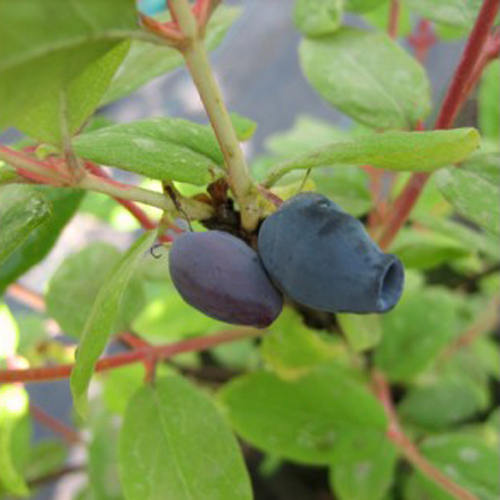Honeysuckle variety Sorceress
Being a relatively young crop (the first commercial varieties appeared in Russia only half a century ago), honeysuckle quickly gained popularity and recognition of gardeners, especially in the northern regions. Traditional berry and fruit trees ripen poorly here, and this forest beauty feels like a fish in water, enduring severe winters and spring return frosts.
About a hundred varieties of this berry are now known! They differ in many respects, and our heroine is not the last on the list. In any case, it is included in the group of the largest-fruited domestic honeysuckles. Let's get to know her!

Description
How the Sorceress was created
The variety was bred in the nursery of the South Ural Research Institute of Fruit and Vegetable and Potato Growing, which is located on the outskirts of Chelyabinsk. It is known that one of the Smolinskaya seedlings, obtained through uncontrolled pollination, became its ancestor.
Appearance characteristics, ripening features
The bush is slightly spreading, medium-sized, sometimes slightly growing, with an average height of about 1.5 meters. Shoots are mostly straight, thickened, with dark brown bark. A waxy coating is observed on the surface of the bark. Leaves are dark green, elongated, densely perched on branches. The leaf plate is slightly concave along the central vein; it lacks the pubescence characteristic of many honeysuckles.
Berries, as we have already mentioned, are large in size, sometimes up to 1.5 grams in weight. Medium, especially small ones, are rarely found. The shape of the fruit is pear-shaped, sometimes elliptical. They have a dark blue color and a distinct waxy coating. The taste is sweet and sour, and the pulp is fragrant, tender, covered with a thin skin.
The variety is considered mid-season, usually the berries are ready to eat in mid-July. However, these terms significantly depend on the region in which the Sorceress is grown. Usually from 1.8 to 2.8 kg of berries are harvested from the bush. It is important that ripe fruits stick well to the branches, almost without crumbling, which is a very valuable quality for honeysuckle. For this reason, our heroine is popular with farmers, for whom it is important that the harvest is harvested immediately and without loss.
Features of agricultural technology, use
Shrubs are best planted in well-lit areas with sufficiently drained and fertile soil. They can tolerate partial shade, but in this case, the yield (already not very high) will decrease. The variety is not at all afraid of winter frosts, and in spring even blossoming flowers are able to survive a short-term drop in temperature.
It is important to consider that the Sorceress is not able to pollinate herself! Many honeysuckles are suitable as pollinators, but especially Sineglazka, Chernichka, Chelyabinka, Izuminka.
Experts also emphasize the increased drought resistance of this variety. It can be grown in relatively southern regions. True, it was noted that in such conditions, the crumbling of berries increases. Even in the northern regions, in the absence of rain for a long time, the soil under the bushes should be regularly moistened, otherwise a bitterness will appear in the taste of ripe fruits.
Mature bushes, especially after 7 - 8 years old, require regular rejuvenating pruning, without which the plant will thicken, and the berries are crushed.
The noted advantages, to which should be added the good keeping quality of the berries, make the Sorceress a valuable industrial honeysuckle. But it is also popular in private farmsteads, summer cottages. The crop is used both fresh and processed: for preserves, jams, juices and wine.








